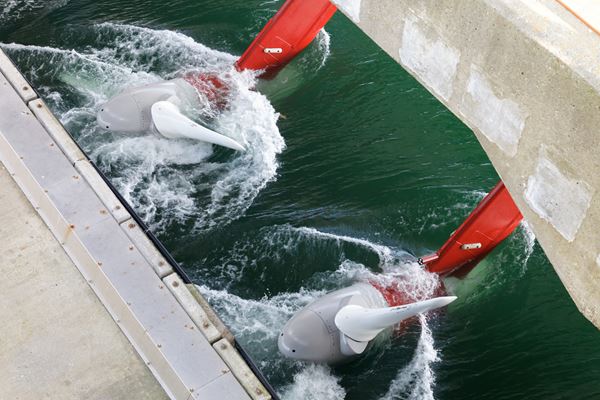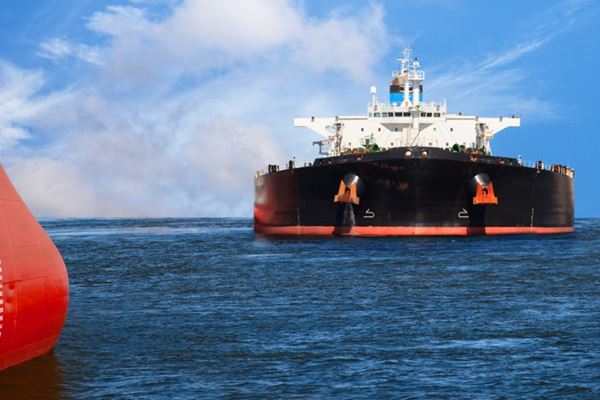The Suez Canal Crisis Brings Risk to Insurers

Last week, the Panamanian flag container ship Ever Given ran aground on the bank of the Suez Canal in Egypt. The 220,000-ton ship, with a carrying capacity of 20,000 twenty-foot-long containers (TEU), remained stranded and blocked all ship traffic from transiting the canal for six days.
The enormity of this incident will be felt by the owners and insurers of Ever Given, one of the largest container ships in the world. The owners and insurers could face business interruption claims from the long line of delayed ships, in addition to the Suez Canal Authority (SCA), expenses that could be borne by Protection and Indemnity (P&I) insurers due to the ship owners' liability. The salvage operation was a massive undertaking and there appears to be bottom damage impactful to the hull and machinery. These claims increased with time, as the vessel remained stranded, highlighting the time-critical nature of refloating the ship.
A stranded ship is in a position that it was never designed for and this unfamiliar ship condition is not easily managed by the ship's crew, even with the use of onboard stability loading computers. In situations like this, specially trained naval architects and marine engineers are essential to get involved.
What is Different About the Stuck Vessel's Condition?
There are four major changes to a ship's behavior as a result of grounding, including:
- There is a loss of buoyancy that changes the vessel's hydrostatic properties and the structural loading of the hull girder.
- The ground reaction at the vessel's keel causes an upward force that causes a virtual rise in the vessel's vertical center of gravity.
- Highly localized loading of the hull can occur on rocky bottoms or pinnacles, or when sandy bottoms are scoured away from bow and stern.
- The stranding leaves the vessel more susceptible to disturbing forces, such as waves and wind.
Following the stuck vessel in the Suez Canal, there will inevitably be hull damage, especially focused on the bow and stern of the ship that impacted the banks. In fact, there was reportedly flooding in a forward void and the bow thruster room.1 When the vessel was grounded on both ends but unsupported through the center of the canal, there was a potential high-sagging related bending moment in the midbody of the ship. These dangerously high-sagging bending moments can produce excessive hull girder stress which could result in fracturing at the tension location in the hull bottom or buckling in the vicinity of deck compressive stresses. On the final morning, with only the bow aground, the maximum bending moments were still potentially high but located more aft.
From the machinery standpoint, there may be damage to the fixed pitch propeller on the single shaft, rudder, and bow thrusters. The rudder was dug in the ground and resisting retraction of the vessel from the bank of the Suez Canal before being freed after four days. If the shaft seal holds, there shouldn't be concerns related to the main propulsion or auxiliary equipment within the machinery spaces. Currently, there are no reports of water intrusion through the shaft seal on Ever Given.
Salvaging Stuck Ships
When salvaging stuck ships, naval architects and marine engineers know they face a dangerous ship condition that only deteriorates with time. Their time-critical actions must include intelligent assessment of vessel condition and steps to free, stabilize, and reduce worsening of the vessel's condition.
Determining Severity of the Grounding
Through a survey of the pre- and post-casualty condition of the vessel's drafts at a known tide, naval architects are able to determine the severity of the ground reaction, location of the center of the ground reaction, and the required force to free the vessel from its stranded state by applying static friction.
Attempting to Use Tugs to Free the Vessel
With the sand or mud bottom of the Suez Canal, the attempts to free the stern using available bollard pull were logical and safe. However, the bow appeared to be grounded on a harder rock bottom, increasing the friction and chances of further damage to the hull. During a loss investigation, naval architects must be aware of the tidal influence in the area, as it can increase or decrease ground reactions as well as any wave effects like scouring away of sand from the ends.
We have seen other effective methods used in this case, such as dredging to reduce the ground reaction by deepening the canal under the vessel's hull. As the ship has now been refloated, it will be interesting to learn whether the salvors used additional methods, such as water jets, air jets, blasting, or another method to disrupt the bottom under the bow.
Maintaining Stability
Naval architects must manage stability in the stranded condition differently than the eventual afloat condition. In its stranded state, the vessel acts as if a weight equal to the ground reaction has been removed from the keel, increasing the vertical center of gravity. The typical action by a crewmember to free a vessel is to deballast tanks low in the ship but in this case, with a severe ground reaction virtually increasing the vertical center of gravity, that may not have been advisable, as that would further decrease the vessel's initial stability aground.
One must carefully consider the weight removals to ensure stability is maintained both aground and in the eventual afloat condition. In the case of a large container ship like Ever Given, that could have meant taking off containers instead of deballasting. Any damage and flooding should have been accounted for via stability calculations prior to refloating the vessel to ensure the vessel maintains sufficient damage stability. If the damage was too significant to safely refloat the vessel, temporary repairs would have been necessary while the vessel remained stranded.
Maintaining Structural Integrity
Naval architects must be cognizant of the impact of the stuckness related to stresses applied to the hull in order to maintain structural integrity. The vessel's strength must be managed throughout the stranding and any salvage operation. While stuck in the Suez Canal, Ever Given had been through a stranding at both ends and was aground only at the bow during the morning hours before floating free. The locations of maximum bending and shear changed and would have been under close technical review by the salvor throughout the stranding. It would have also been important to know the extent of damage to the bow and any other locations so that stresses could be monitored around any reduced structural sections.
Refloating and Drydocking
The bow may have been harder aground on a less friendly bottom. If complete refloating hadn't been successful via jets, dredging, or blasting, Ever Given may have had to be refloated via weight reduction by removing containers. Once refloated, the possible damage to the rudder, propeller and bow thrusters could make the vessel be treated as essentially a dead ship tow.
The vessel will likely be provided with a tug escort out of the Suez Canal and taken directly to a location for underwater survey. Marine engineers will then be called to examine and survey the extent of machinery and hull damage and establish a repair or replacement plan. Due to the flooding of the forward spaces on the stranded ship, many pieces of electrical equipment will likely require replacement.
Cargo Claims
With a capacity of 20,000 TEU, the amount of cargo involved with Ever Given alone is large enough for concern for cargo owners' losses related to missed delivery deadlines, as well as other damages and losses. The immensity of this incident is in the hundreds of other cargo ships that were delayed by waiting for nearly a week to make a Suez Canal transit or had to divert around the southern tip of Africa at Cape Horn, adding as much as two weeks to the transit. The delay of ships and their cargo is a complex issue that will be claimed through P&I insurers, but it is not yet clear how many of the ships will actually be covered for delays. Delay cover may only be held by a small portion of the hundreds of impacted ships.2
Suez Canal's Stuck Vessel Impacts Insurers
The risks for hull, machinery, cargo, and P&I insurers are steadily increasing, as the TEU capacity of the container ship fleet has grown by 75.6% between 2017-2020.3 Insurers can't eliminate this risk inherent to vessel growth but can better prepare for it with the involvement of experienced naval architects and marine engineers. These experts, trained in the art of salvage, can help both the insurer and the insured reduce the size of the claims involved in these time-critical incidents.
Sources
1 gcaptain.com
2 lloydslist.maritimeintelligence.informa.com
3 hellenicshippingnews.com
Our experts are ready to help.



